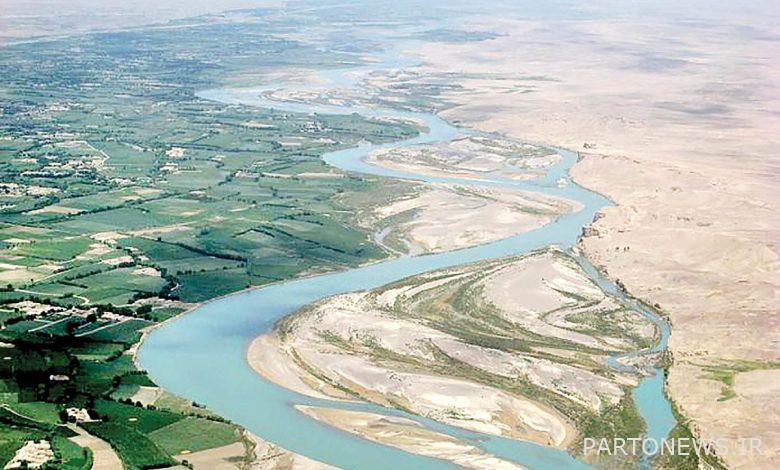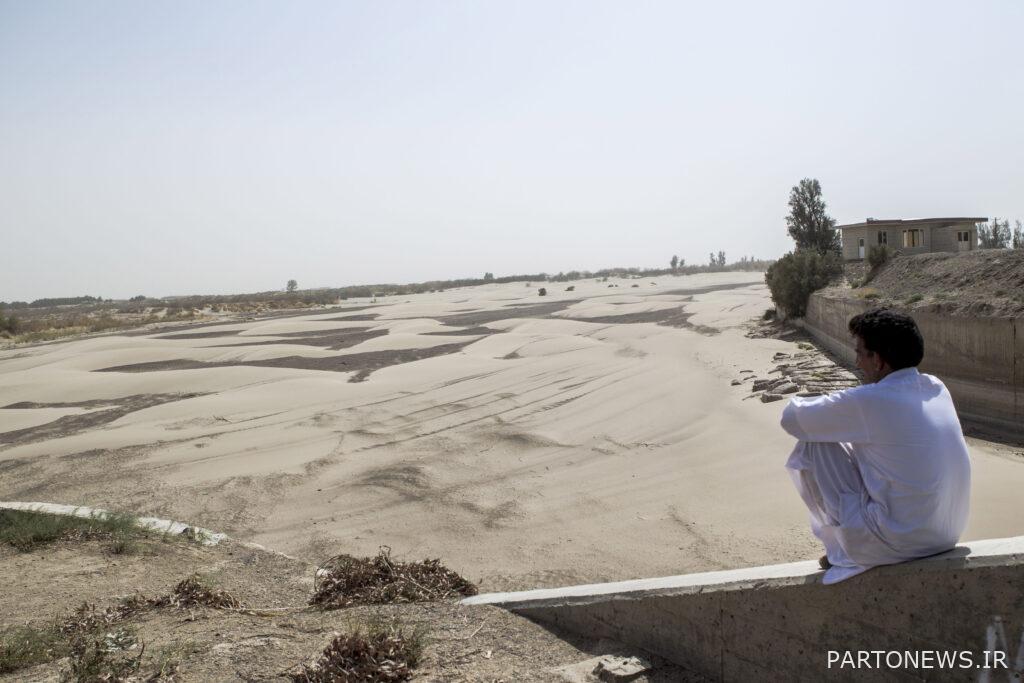A new round of the 150-year-old dispute between Iran and Afghanistan over the Hirmand territory/continuing water extraction of the Kamalkhan diversion dam is a clear violation of the Hirmand treaty.

According to the social reporter of Moj news agency, border rivers as one of the sources of water supply play a decisive role in the development of agriculture, followed by the social, economic and cultural development of countries, and their drying up or low water endangers life. It causes social, economic and environmental losses.
River Hirmand As one of the important sources of water supply in Sistan and Baluchistan, it is considered as the vital artery of this province and this province is highly dependent on the water flow of this river. Therefore, this issue has become a national issue. However, the fluctuations in the water flow of Hirmand and the decrease of water flowing towards Iran in the past 150 years have always caused problems in the political relations between Iran and Afghanistan at the local and national levels. In this connection, the reduction or interruption of the flow of Hirmand water into our country in recent years has not only caused the attention and concern of the public opinion regarding the occurrence of an environmental disaster in Sistan province, but also a serious concern for foreign policy officials and related institutions. Has become.
So that in recent days, Sistan’s claim to the water of the Hirmand River was one of the most important issues that caused the political diplomacy of the two countries of Iran and Afghanistan to be challenged, an issue that “Seyed Ibrahim Raisi» The president of our country warned the Taliban government about it; The warning that met with the reaction of the Prime Minister of the Islamic Emirate of Afghanistan and in response to Iran’s warning in a statement emphasized the commitment to the treaty 50 years ago and at the same time stated: “There is no water in the Kamal Khan dam and if the water in the dam No matter what happens in it, it will not reach Iran. Therefore, it is necessary for the Iranian side to understand these facts. Blue is not needed; If there were eyes!
Contrary to what the Afghan government announced, the satellite images of the Khayyam satellite and other satellites showed that the water of the Hirmand River is kept in dams such as the Kamal Khan Dam so that it does not reach the Iranian soil. In this connection, Hossein Ali Shahriari, the representative of the people of Zahedan in the Islamic Council, says: “Today, the Islamic Republic of Iran has significant capabilities in the field of satellites and space, and the conditions are not such that the Afghan government can hide the reality by issuing such statements. . In addition to previous dam constructions such as the Kamal Khan Dam on the Hirmand River, the Afghan government has recently started to build a dam on the Farad River to prevent its water from flowing to Iran.
Geopolitical position of Sistan and Baluchistan province
Sistan has long been of great importance due to its special geographical and climatic position in the geopolitics of eastern Iran. Consecutive droughts, the construction of a dam over the Hirmand River, which is its main feeding artery, and Afghanistan’s non-compliance with the 1351 international treaty on the release of 26 cubic meters of water per second in the Hirmand River, have led to the drying up of Hamon and made Sistan the center of movements It has become quicksand. This issue itself has caused many environmental, social and economic problems.
Destruction of the region’s ecosystem
Environmental crises in this area have had a wider scope, such that most of the extinct plant species, aquatic animal species have been destroyed and birds have been forced to migrate or have finally disappeared. In general, the drying up of Hamon due to the unfairness of solving the Hirmand water problem has led the region’s ecosystem to destruction. Also, from an economic point of view, the dependence of the Sistan region’s economy on agricultural and fishing jobs and the loss of these two jobs has made the economic life of the region face many problems.
Read more:
The Afghans declared themselves to be loyal to the Treaty of Haqaba Hirmand
Iran’s Foreign Ministry reacted sharply to the Taliban’s statement
The Taliban does not allow experts to investigate the situation in Hirmand
Dam construction on Hirmand
In the past years, the Afghan side has consistently refused to pay Iran and the Hamoun lagoon, and in 2021, with the opening of the Kamal Khan diversion dam with a storage capacity of 52 million cubic meters, it made the situation more difficult for Iran. The construction of two dams, Kajaki and Sohtuk, on the Hirmand River and its tributaries has caused a significant part of the Hamon lagoon to lose its ability to enter Iran.
In addition to these, another very important point is that the satellite documentation and the statements of the Afghan officials in the negotiations between the two sides confirm that after the Kamal Khan dam was drained, they diverted a significant part of the dam’s water to the salt marsh called Godzareh, and not only the possibility of using this They don’t have water because of the salt marshes of the region, but they also don’t allow this water to enter Iran.
In this regard, Ali Akbar Mehrabian, Minister of Energy, in August of last year, in a conversation with the media, said: “Unfortunately, in two years, water has gone to Godzareh, which has actually led to wastage, and this issue has caused us to lose our legal rights.” We will be deprived and the people of Zaranj states of Afghanistan will also be deprived of their share. In the recent trip, we had a lot of negotiations and announced that this additional structure prevented us from receiving our title from Hirmand. This issue was accepted by the Minister of Energy and the highest Afghan official; That is, it was decided that not even a drop of water would go to Godzreh; It means that Iran’s official authority should be received in the flood of rains and releases in the future and act within the framework of water diplomacy.

What is the solution?
However, despite Iran’s serious negotiations with the Afghan side last year regarding the necessity of refusing the diversion of Hirmand water towards the Godzare salt marsh and paying Iran’s legal rights, investigations show that neither last year nor in the new year, the Afghan authorities have fulfilled the historic commitments and negotiations of the two countries. They did not and will not act on their side.
However, despite the historical, geographic and existing facts, it seems that this category has become a serious challenge that requires the serious and practical involvement of the authorities in this sensitive issue.

